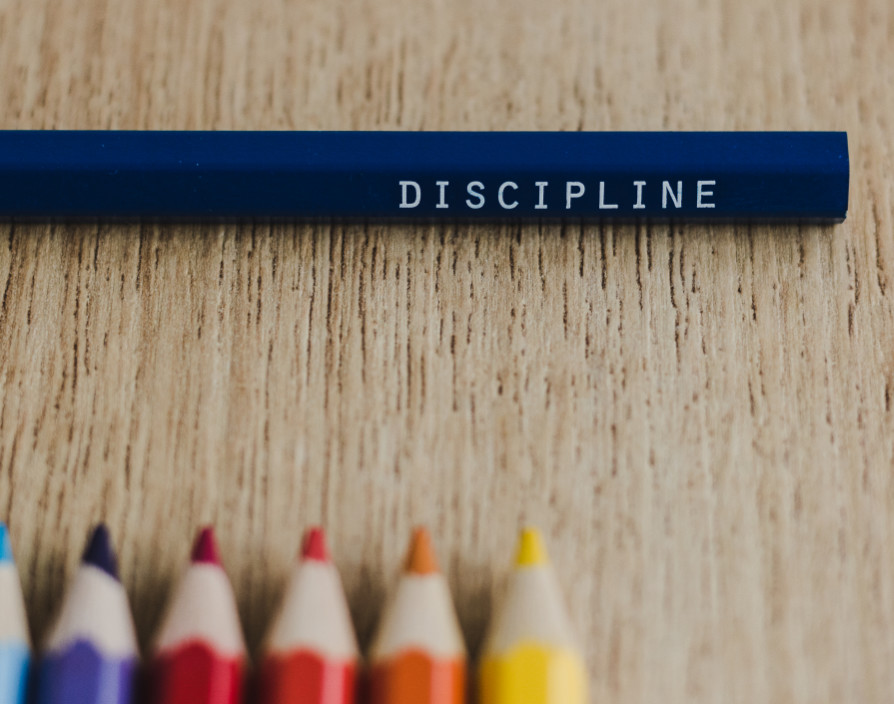Most CEOs, founders, and leaders I work with appreciate the power of discipline – and nearly all of them wouldn’t mind being a bit more disciplined. On a personal level, discipline has helped me tremendously in work and life, from landing a dream role at McKinsey & Company, to helping build Skype before our multi-billion dollar exit to eBay, to the advisory and training business that I run today.
But discipline didn’t come naturally to me. Here are 3 things that have helped me acquire the discipline I need to achieve what I want in life.
Choose your pain wisely
Do you prefer the pain of discipline or the pain of regret? It’s challenging to show up at your best. It requires planning. It requires courage. It requires focus. But above all, it requires discipline. And discipline is often painful. To do in the moment that which you know you should do, despite not wanting to. But we must choose our pain wisely.
Often it’s easier to skip our exercise, put off that challenging project, or compress the time we make available to our loved ones. But what’s easy in the moment, often leads to regret down the road.
Nothing comes for free in life. Everything requires some form of payment. We can either “pay” for the benefits we seek with the pain of discipline now or the pain of regret later. And in my experience, the pain of regret later far exceeds the pain of discipline now.
So, choose your pain wisely, and the next time you feel one of those decision points in the course of your day, consider choosing the pain of discipline rather than the pain of regret. In the grand scheme of things, it’s far less painful!
Create Necessity
Success comes in many forms. Sometimes it’s showing up and doing the small things, day after day. Other times it’s taking a risk and doing something for the first time.
In either instance, there’s one thing that I’ve used to power my progress, more so than any other technique. I create necessity.
In other words, I purposely manufacture situations that force me to show up and deliver. Here are a few simple ways I’ve done this:
- Exercise. Not long ago I went through a period that disrupted my normal exercise schedule. I found getting back to the gym quite challenging, but rather than push my way through I hired a personal trainer. Now I had to show up on time at the gym and push myself hard since someone else was waiting on me.
- Habits. Once I had a collection of daily habits that I was trying to implement. They included things like completing a certain amount of focused work first thing in the morning, taking breaks throughout the day, and getting to bed at a new time. At first, I struggled to consistently implement these new habits. But then I made a bet with my peers. For every day that I didn’t complete my habits, I would donate money to a cause I didn’t like. Suddenly my consistency shot through the roof.
- Business Development. Several times in the development of my business I’ve had to do or create things that I’ve never done before. For example, giving a talk on a new subject or building a new course for my readers and students. In either situation, I make a public promise and book the date to give the talk or launch the course. Now everyone is aware and expecting me to deliver, so I have no choice.
So, bring to mind something that you know is important for your growth and development but that you perhaps find scary or challenging.
How can you create necessity around this thing?
Do so and you’ll power your progress faster than you realize.
Stay Flexible
In our quest to become more disciplined and reach our full potential, it’s easy to gravitate towards structure as the solution. More structure to our days, more structure to our thinking, more structure to our work.
But too much structure can take the wind out of our sails and make work and life harder than they need to be. The key is to navigate the “River of Flexibility”.
Imagine for a moment that you are “flowing” down a river. As with any river you have two banks.
The bank to the right is spontaneity. Overflow the spontaneity bank and you end up in the land of chaos. Nothing gets done as you would like, all your effort comes with far too much pain, and people view you as unpredictable.
The bank to the left is structure. Overflow the structure bank and you end up in the land of rigidity. Things may get done but your days feel rather soulless, you lose the spark in your eye, and others view you as robotic.
The key is to allow yourself to gently flow down the river bouncing between each bank, but not overflowing either of them. The key is to remain flexible between structure and spontaneity.
So, what does this mean in the context of your day?
- Create a basic structure to your day, such as how you start your mornings and end your evenings, and when you focus on creative versus reactive work – but then be open to letting things flow in between, so you can accommodate an important interruption or opportunity.
- Be flexible with your more structured goals. For example, practice self-compassion and aim for an 80% hit rate in your routines. 80% is pretty darn good and over time will generate huge results.
- Be open to spontaneous ideas. Whether to try or do something new (perhaps only even thought of that very morning), meet someone you haven’t seen for a while, or simply chill out. All those little moments and experiences add a dash of vibrancy to your life, for your benefit and those around you.
So, where are you in the River of Flexibility? Are you flowing between structure and spontaneity? Or are you overflowing one of the banks and ending up in the land of rigidity or chaos?
Think about it. Then take action.
So there you have it. My top 3 ways to build more discipline in life – choose your pain wisely, create necessity, and stay flexible!
P.S. A special shout out to Daniel Siegel who inspired the “River of Flexibility” with his “River of Integration” concept in his book Mindsight.
“
Share via:








































